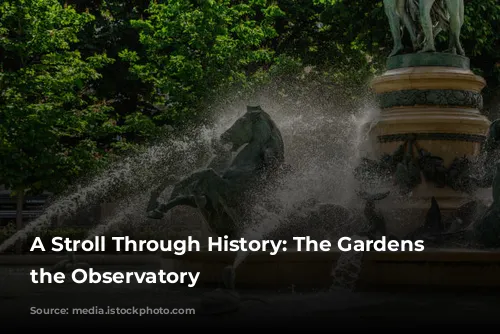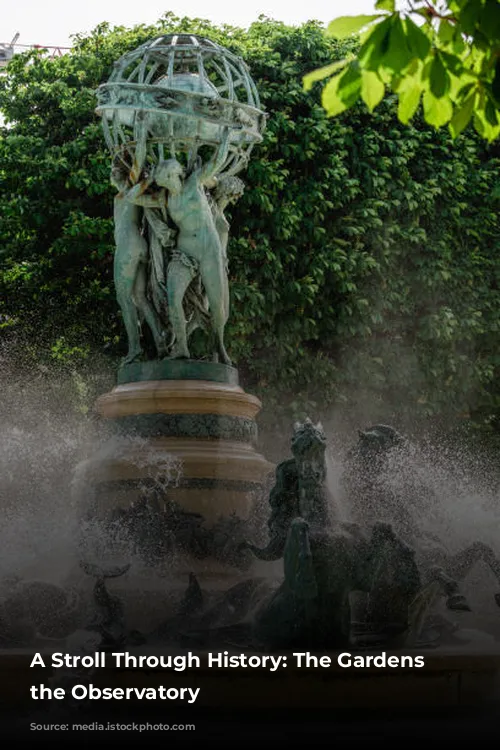Imagine a peaceful Parisian avenue, lined with towering chestnut trees, leading you from one of the city’s most beloved green spaces, the Jardin du Luxembourg, to the renowned Observatory of Paris. This is the Avenue de l’Observatoire, and it holds within its embrace two hidden gems: the Jardin Marco Polo and the Jardin Robert Cavelier de la Salle.
These beautiful gardens are a testament to the rich history of the area. They stand on land once occupied by the Castle Vauvert, built by King Robert the Pious in the eleventh century. The castle later passed to the monks of Chartres, but it was destroyed during the French Revolution in 1790. The land was then divided, with a portion becoming part of the Luxembourg Garden and the rest being developed into the Avenue de l’Observatoire.
In 1867, the gardens, as we know them today, were brought to life under the expert hand of architect Jean Chalgrin. Lush lawns and rows of chestnut trees, a hallmark of classic French gardens, provide a welcoming canopy of shade over the walkways. Bright and colorful flower beds bloom throughout the year, adding a touch of vibrant beauty. And, to cap it all off, these gardens are adorned with numerous sculptures, adding an element of artistic grandeur.
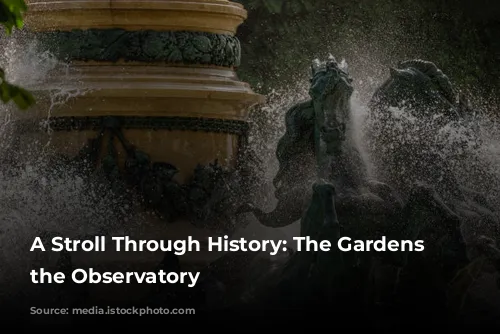
A Journey Through Time: Gardens Dedicated to Explorers
The Jardin Marco Polo occupies the southern half of the Jardin de l’Observatoire. This 1-hectare (3-acre) green oasis pays tribute to the famed Venetian explorer, Marco Polo. His spirit of adventure is palpable in every corner of the garden.
Adjacent to it lies the Jardin Robert Cavelier de la Salle, a slightly larger garden dedicated to the 17th-century French explorer who made daring voyages through the Great Lakes, the Gulf of Mexico, and the Mississippi River. De la Salle’s legacy is deeply entwined with this garden, as he claimed the Mississippi basin for France.
Both gardens are filled with beautiful columns and statues. These sculptures, crafted by renowned nineteenth-century artists like Charles Gumery, Gustave Grauk, Jean-Joseph Perraud, and François Jouffroy, depict allegorical figures representing Day, Night, Dawn, and Twilight. These captivating figures serve as a reminder of the adventurous journeys undertaken by the explorers they honor.
Adding to the joy, both gardens feature playgrounds to delight young visitors and ping-pong tables for a friendly game. Plenty of shaded benches are scattered throughout, offering a peaceful refuge for anyone seeking a moment of quiet respite.
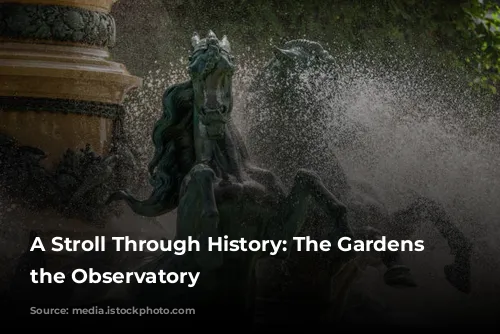
A Fountain of Wonder: The Heart of the Gardens
A grand masterpiece stands as the centerpiece of the Jardins de l’Observatoire: the monumental Fontaine des Quatre Parties du Monde (Fountain of the Four Parts of the World). This bronze sculpture, designed in 1873 under the supervision of Gabriel Davioud, is a testament to artistic brilliance. It is also known as the Fontaine de l’Observatoire or the Fontaine Carpeaux, named after the main sculptor.
The fountain depicts figures representing the continents of Asia, Africa, Europe, and America, perched atop a pedestal. Each figure is a captivating work of art. Asia is represented by a Chinese woman, Europe by a white woman, Africa by a black woman, and America by an American Indian woman.
These remarkable figures, sculpted by the renowned Jean Baptiste Carpeaux, support a globe adorned with zodiac signs, the work of Eugène Legrain. Prancing seahorses, created by Emmanuel Frémiet, surround the pedestal, adding an air of playful vitality. And to complete this lively scene, statues of fish and turtles, also crafted by Frémiet, gracefully dot the fountain’s base.
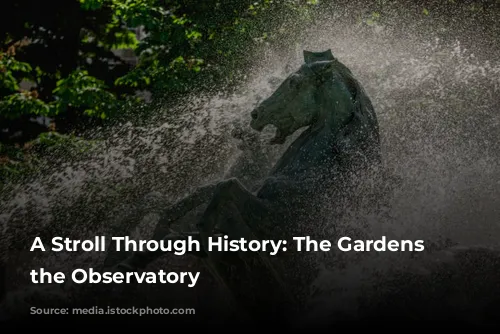
A Legacy of Exploration and Beauty
The Jardins de l’Observatoire, with their rich history, elegant design, and fascinating sculptures, offer a unique glimpse into the past and a peaceful sanctuary for present-day visitors. The gardens serve as a testament to the legacy of great explorers and the enduring beauty of Parisian art and design. Whether you’re strolling through the shady walkways, admiring the intricate sculptures, or simply relaxing on a shaded bench, a visit to these gardens is an enriching experience that will linger long after you’ve left.
